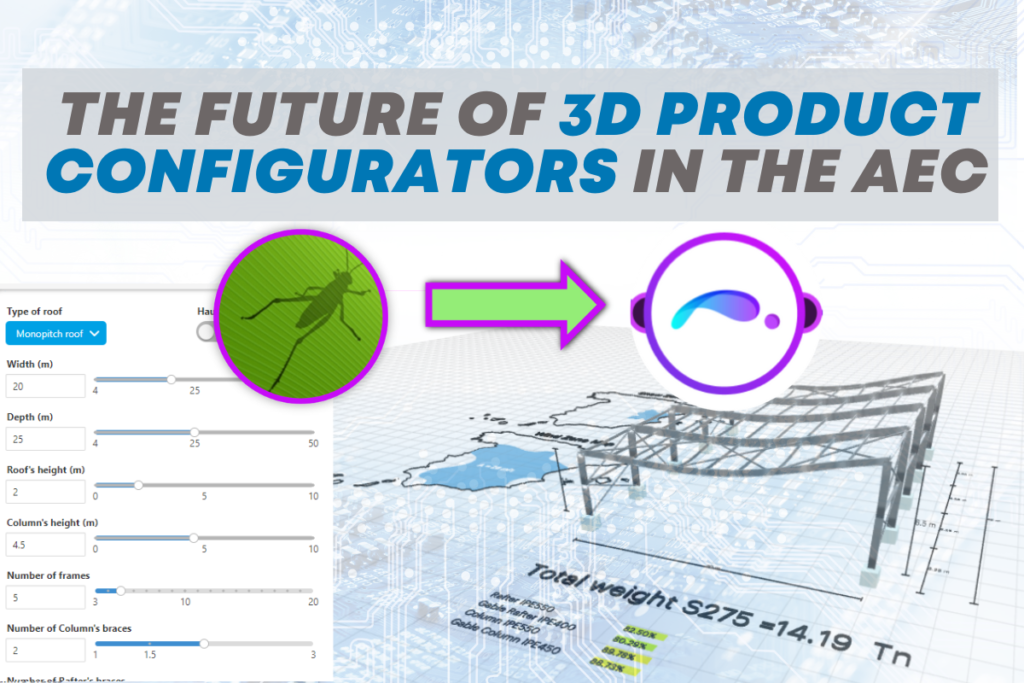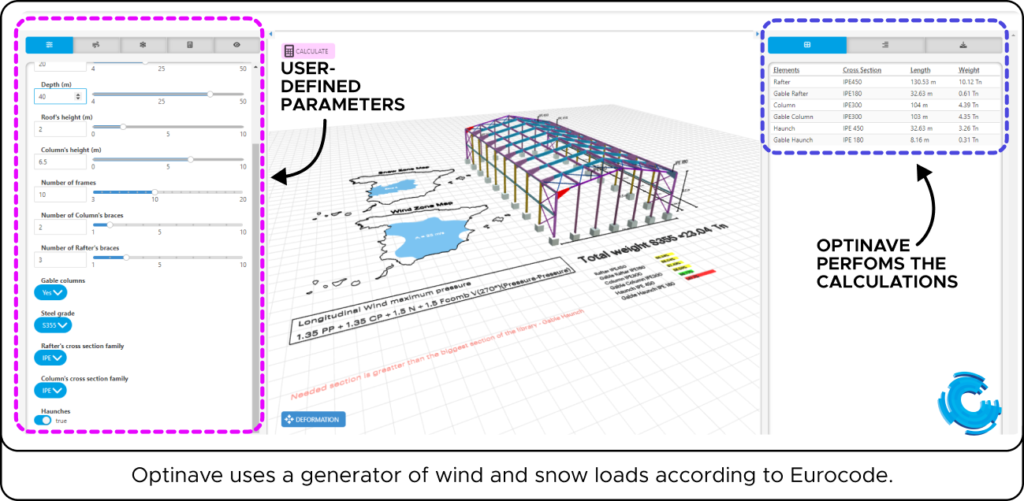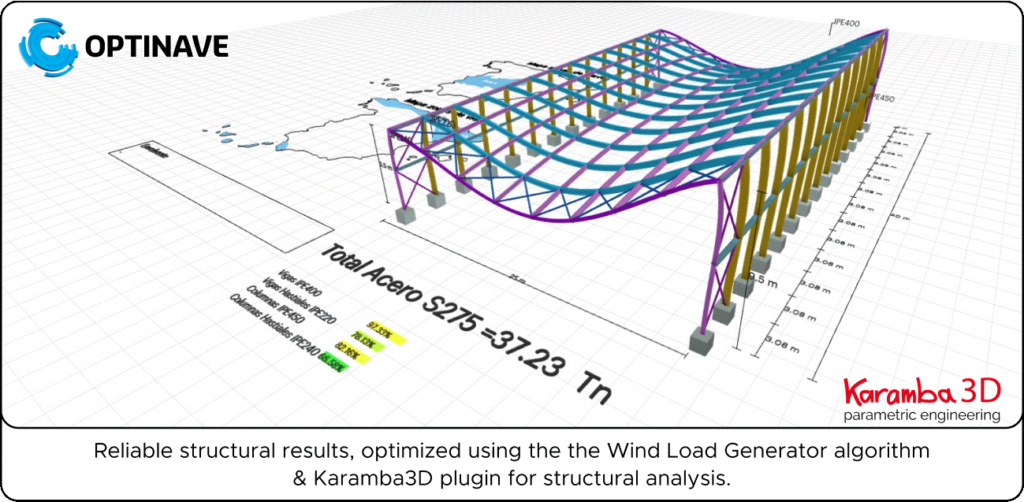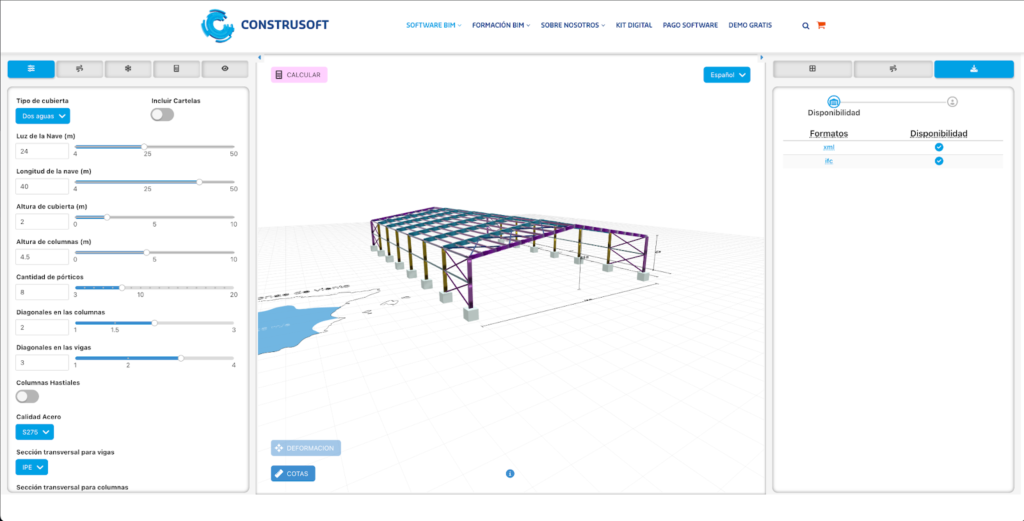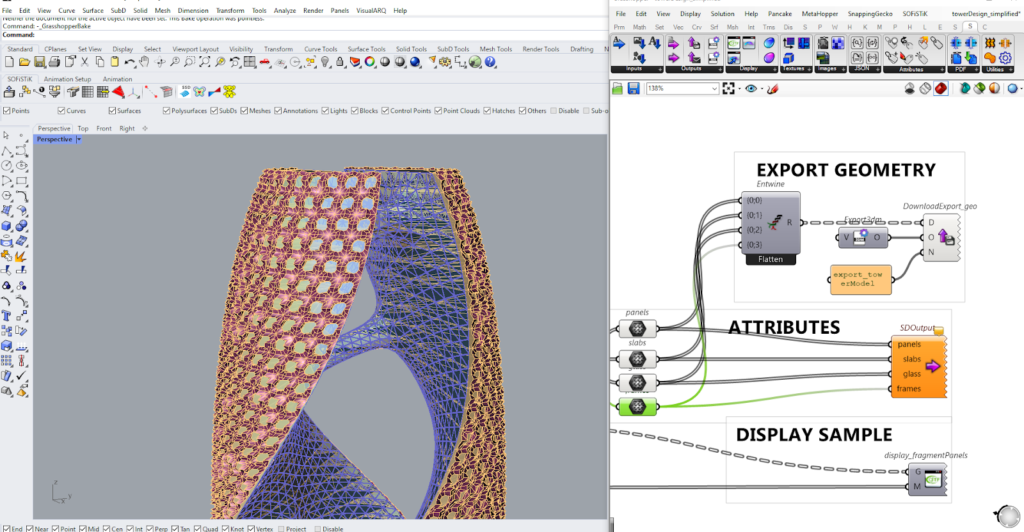All businesses have been seeking ways to automate tasks related to sales, design, and manufacturing workflows. One platform that has made this process simpler and more cost-effective is ShapeDiver. As an online platform for hosting and sharing Grasshopper files, ShapeDiver allows businesses to easily create online tools like 3D product configurators and share them with clients and colleagues without the need for specific software licenses or Grasshopper experience. This greatly expands the reach and usefulness of Grasshopper files, making it possible for non-technical stakeholders to access the power of parametric design via any web browser. In this article and attached video, I will explore the benefits of using the ShapeDiver plugin to Grasshopper for Engineers in the AEC industry.
Article about Product configurator is sponsored.
Table of Contents
1. ShapeDiver = YouTube ?
Many of you for sure wonder what ShapeDiver is.
ShapeDiver is an online platform that allows users to upload and share Grasshopper files, which can be automatically translated into cloud applications. This enables the creation of web-based tools like 3D product configurators that can be embedded into external websites and connected to external systems.
Just like YouTube is an online platform for hosting and sharing video files, where users upload the videos they record with their phones or professional cameras, ShapeDiver is an online platform for hosting and sharing Grasshopper files, where users upload the Grasshopper files they create with their laptops or workstations. This way, other stakeholders, such as clients or colleagues, can access them without needing to have a specific software license or Grasshopper experience.
ShapeDiver is becoming increasingly popular among professionals, particularly in the AEC industry, where Grasshopper has been widely adopted. However, Grasshopper is now rapidly expanding into other industries, such as Interior Design, Furniture, Jewelry, and Medical, making ShapeDiver a valuable tool for a wide range of professionals globally.
2. Structural analysis using Karamba
Let’s show in a practical example how this plugin can be used by Structural Engineers. I had the pleasure of testing Optinave, which is an online tool created by Construsoft, a leading Spanish supplier and developer of BIM software.
This is a free web application for calculating and optimizing the design of an “Industrial Warehouse” type metal structure in accordance with Eurocode provisions based on a Grasshopper algorithm that uses Karamba 3D as a structural analysis engine and ShapeDiver as a web visualization engine.
I wrote a separate article about Karamba 3D. You can check it here.
In short, Karamba 3D is a structural analysis plugin for Grasshopper, a parametric design tool for Rhino 3D. With Karamba 3D, engineers can perform complex structural analysis on their digital models directly within Grasshopper. In addition to linear and nonlinear static analysis, modal analysis, and time history analysis, Karamba 3D also provides powerful optimization tools for finding optimal structural configurations based on a variety of performance criteria.
Optinave efficiently combines Grasshopper, Karamba and ShapeDiver. It is designed to be user-friendly, making it easy to create and use at work. Using the ShapeDiver interface, users can easily modify all Grasshopper parameters and generate internal forces, similar to a standard structural analysis tool. This allows for quick evaluation of the utilization of profile groups and the impact of changes to steel quality on the entire structure. Optinave can even calculate the total weight of steel used, making it easy to estimate the overall costs of the project.
Thanks to Karamba 3D software, this tool facilitates calculations by generating wind and snow loads based on Eurocode standards, and it can display and apply wind loads automatically to regular geometries. Additionally, users are able to visualize force, reaction, and deformation diagrams of the structure under the applied loads.
Here you can test this tool for free – LINK TO OPTINAVE
3. IFC export using GeometryGym
The design and optimization features in Optinave provide an initial approximation of the structure’s final design, allowing engineers to continue their work on their preferred software. Additionally, the ability to export .ifc and/or .xml files is essential for continuing the calculation process without starting from scratch.
With these files, all the geometric information generated in Optinave can be easily accessed, saving significant time in the modelling process. All this is possible thanks to the GeometryGym plugin.
4. Uploading Grasshopper Files to ShapeDiver
Now let’s go through one of the key steps – uploading Grasshopper files to the platform. This process can seem daunting at first, but with a few key considerations in mind, it can be a straightforward and effective way to bring your parametric models to life. In this section, I will guide you through the process of adding Grasshopper files to ShapeDiver, highlighting the important factors you need to remember along the way. From optimizing your models for web use to understanding the different sharing options available.
The first step to uploading the files to ShapeDiver is creating an account on the website and downloading the ShapeDiver plugin in Rhino using the Package Manager.
ShapeDiver components in the files are used for 3 goals:
- Define materials for the various elements of the building
- Define file exports for the online model that allow users to download CAD files from each design iteration
- Store attributes in the various elements, which we will explore deeper in the next part of the video.
Note!
Before uploading the file to ShapeDiver, it is recommended to follow these 4 steps:
- Import all data through the import components of ShapeDiver plugin or just internalize the data in grasshopper.
- Check if you are using only supported plugins
- Hide in Grasshopper unnecessary geometry
- Manage data trees strategically to optimize the performance of the model or flatten them if the model is simple.
ShapeDiver gives various ways to share models with other stakeholders:
- As a public model in the edit mode and share the link with anyone
- As a private model in the edit mode and activate link sharing. Only people with the link can access the file.
- As a private model (with no link sharing) and share securely with other ShapeDiver users. It is possible to control which permissions those users have over the model.
- As a private model shared with the company members on the platform (Organization), which includes further ways to collaborate and share models with own team.
5. Attribute visualization in ShapeDiver
By using ShapeDiver, each element in a model can be inspected, and users can list the attributes stored in the element and their value. This feature is available through the Selected Element Attributes option.
In addition, ShapeDiver offers an attribute visualization mode, which allows the quick creation of analysis models. This mode displays the values of specific attributes according to a colour gradient over the entire model. This feature is especially important for architects who need to access essential attributes.
For example, in a facade model created using ShapeDiver, the facade panels can contain a panel ID attribute and a panel type attribute. This information is easily accessible through the platform’s Selected Element Attributes option. Similarly, floor elements can contain a floor area attribute, which is also readily available to users.
You can test the Tower ShapeDiver model for yourself – LINK
6. ShapeDiver upcoming releases
ShapeDiver plans to simplify interoperability between the platform and various CAD and design environments in future releases. In this article, I presented how you can download CAD files from a ShapeDiver model for further work in other software environments.
However, the next iteration of ShapeDiver will allow for direct data transfer between an open ShapeDiver model and active sessions in Rhino, Adobe Illustrator, and potentially more software clients. Alongside current features like sharing options, Saved States, and the Attributes system, this update aims to enhance collaboration within the AEC industry and create new ways to define interoperability workflows among teams, partners, and clients.
In conclusion, ShapeDiver is a powerful platform that empowers engineers to create and share 3D product configurators with stakeholders across various industries. As demonstrated in this article, ShapeDiver is increasingly being adopted by the AEC industry due to the wide adoption of Grasshopper, a popular parametric design tool in this industry.
Moreover, ShapeDiver’s user-friendly interface enables non-technical stakeholders to take part in a product’s design by using simple controls such as range sliders, text inputs, dropdown lists, and colours. This greatly improves collaboration and can lead to better products.
Finally, with the upcoming release of new features that will enhance interoperability between the ShapeDiver platform and various CAD and design environments, the future of 3D product configurators looks bright. The ShapeDiver platform will continue to improve collaboration in the AEC industry and bring new ways to define interoperability workflows among teams, partners, and clients.
Do you want to unlock the full potential of ShapeDiver and purchase a Designer, Designer Plus, or Business plan? Use a coupon code BIMCORNERXSHAPEDIVER that will give you 10% off on any plan to the first 10 people who redeem it.
For more information and guidelines, visit https://shapediver.com/
If you want to get more information about Grasshopper and learn parametric modelling, download the free guide – FREE DOWNLOAD
Grasshopper is a plugin to Rhino that you can download HERE.

